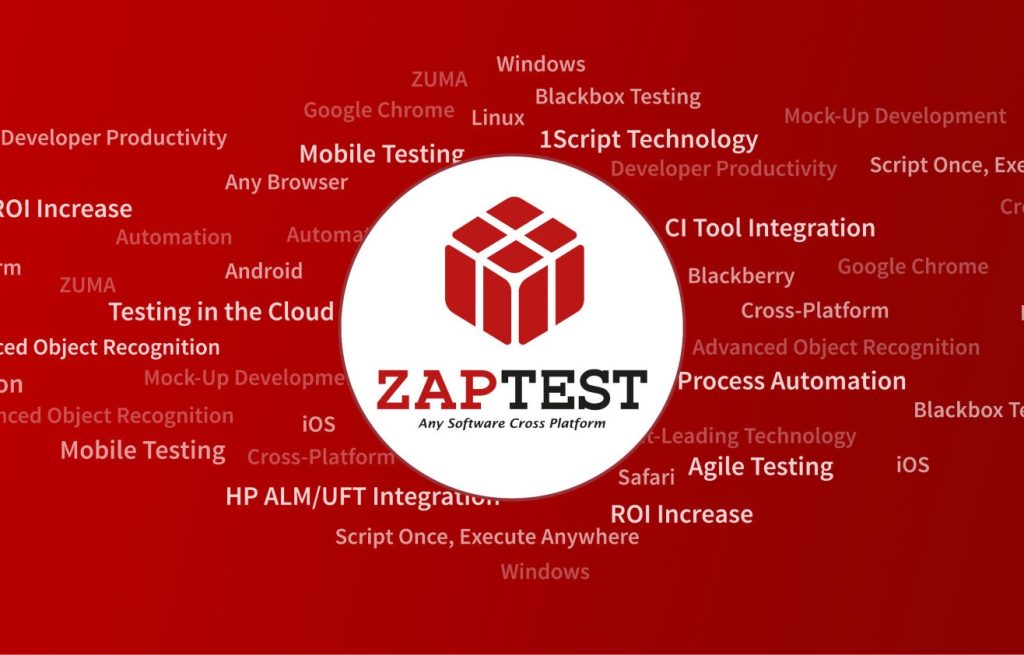A test plan in software testing is a document that outlines everything you need to verify for a comprehensive release. These documents help guide teams through the software testing life cycle, ensuring they have the time and resources required for solid testing.
In this article, we’ll teach you what a test plan in testing is, why they’re important, how to write one, and what test plan software tools you can use to ensure your apps are verified and ready for the market.
What is a test plan in software testing?

A test plan is a detailed and comprehensive software testing document that outlines the strategy, objectives, schedule, resources, and overall approach that are needed to complete a project.
In many ways, a test plan is like a blueprint for a building. Both documents are detailed and provide a step-by-step guide for reaching an end goal. In the case of a test plan, that objective is a solid and verified application; for a blueprint, it’s a finished building.
In short, a test plan provides everything you need to verify a project.
1. What is the software testing life cycle?
The software testing life cycle (STLC) is an established part of the software development lifecycle (SDLC). The STLC is a series of steps that are used to verify the quality of a software project.
A test plan helps you formalize these steps and understand things like:
- How long it will take to verify your software project
- What methods and techniques are needed
- What resources are required for testing
- The budget you need
The STLC brings many advantages, including:
- Facilitates a shift-left testing approach that allows teams to test products early and avoid defect leaking in the project
- By testing early in the process, bug detection is quicker and easier
- Using clear testing phases means that you can track the progress of your project and schedules.
2. What is a test case?
A test case refers to the documentation that is generated by a tester that contains detailed information about what is being tested and what the goal of the test is. Test cases are essential component parts of the test plan because they represent the work that needs to be done.
Test cases should contain:
- Unique names or numbers
- A clear statement about what is being tested
- An outline of the testing methodology
- The expected outcome
- The actual outcome
- A clear statement about whether the test has failed or succeeded
- A list of the bugs or defects discovered
Purposes of a test plan in software testing
The biggest reason why you need a test plan is that it provides a structured framework for:
- Executing effective testing procedures
- Ensuring the software’s quality throughout the development lifecycle.
Of course, those are just the high-level overviews. However, there are many more functions to consider. Here are a few of the reasons why test plans are essential.
1. Define the scope and objectives of software testing
A good test plan document in software testing helps the team outline what they want from the process. It clarifies which components, functions, and features need to be verified. What’s more, it helps establish the objects of the test and underlines what should be tested and, just as importantly, why it should be tested.
2. Define test strategy
A test strategy and test plan are essential if you want a product you can stand behind. Formulating the test strategy involves deciding which types of tests you need, be it unit, functional, compatibility, performance, and so on. In effect, the document should make it clear what methodologies or techniques should be employed during software testing.
You can find a test strategy example PDF at many sites, including here at template.net.
3. Scheduling your tests
Software development lifecycles are tighter than ever, which means there is no time to waste. A good test plan should act as a timeline for your testing. Things that you need to account for are test case development alongside the time needed to test the application and, of course, the time that is required to fix defects.
Once the schedule is ironed out, you can begin to assign responsibilities and resources to your testing project.
4. Resource management
Software testing can be resource-intensive. Lots of different types of capital are involved, including the time and effort of your testers. Again, a good test plan is aware of this and allocates personnel, hardware, software, and tools. What’s more, this section of the document should offer insight into the testing team’s role and responsibilities and underline which cohorts need to communicate with each other.
5. Communication
A test plan doc is also a communication tool. It’s important for developers, but also investors and stakeholders, to get an idea about how the project is going, how resources are allocated, and what sort of timeline they should expect for a finished project.
The importance of a test plan in testing
Now that we have established what a test plan is and the function that it serves, it’s time to think about why it’s such an important part of the software testing life cycle.
#1. Ensure comprehensive testing
A well-constructed test plan ensures that no stone is left unturned in the pursuit of a stable software release. By ensuring that all the critical aspects of your software are detailed and tested, you can mitigate against any oversights. A test plan acts like a blueprint that guides testers and makes certain that all bugs, scenarios, and functions are weighed and verified.
#2. Efficiency
Taking a structured approach to testing guarantees that you use your time and resources efficiently. A clear guide means that testers won’t repeat tests unnecessarily and that sufficient time and resources are allocated to the most important tests.
#3. Effective communication
As mentioned above, a test plan helps everyone, from investors to stakeholders, understand what is happening and why with their product. Relevant parties can read the test plan and have a clear idea about the strategy and timelines involved. Testing can be a mysterious issue for non-technical teams. A test plan demystifies the process and helps align different stakeholders.
#4. Risk management
All projects come with an element of risk. Some of the things that management must think about are time constraints, resource limitations, or issues with compatibility. Leaving these hazards unchecked can result in delays, expenses, or, in the worst-case scenario, project failure.
A test plan ensures that these potential problems are identified and evaluated early in the process. A lot can go wrong during the SDLC, but a good plan helps mitigate typical issues.
#5. Progress benchmark
A solid test plan document acts as a benchmark against which to measure progress. It’s not just about setting timeliness, although that is an essential function of any test plan. It’s also about understanding how test performance is going when compared to expectations
The big advantage here is that you can use the test document to make informed decisions during the testing process.
#6. Default tracking
Tracking defaults and prioritizing which to resolve first is an important element of the testing process. A test plan can act as a framework for this exploration because it can be a dynamic document where issues (and their resolutions) are recorded.
#7. Historical document
Finally, a test plan is an important way to track everything that happens during the software testing life cycle. As testing proceeds, project managers can record testing activities, decisions, and results, which can even become the basis for software documentation later down the line.
A test plan is a vital part of the delivery of high-quality software. It helps with every aspect of testing and promotes transparency, accountability, and communication.
The challenges of a test plan in software testing
The advantages of a thorough test plan are apparent. However, it’s not an easy ride. It takes a lot of work, foresight, and experience to produce the right document. Beyond that, there are several roadblocks that you need to know about when building your test plan.
Here are a few of the most common issues that you should be aware of.
1. Unclear requirements
Most software developers understand the pain of receiving unclear requirements. Stakeholders won’t always know exactly what they want or may be in disagreement over a project for a variety of reasons. Quite often, requirements will be incomplete, which leads to a different set of issues.
If developers are working with insufficient or ambiguous requirements, it’s tough to build the best and most comprehensive test plan possible.
2. Shifting requirements
Unclear requirements are common, but shifting requirements are a more frequent bane of the software developer. Sometimes, requirement changes are a result of indecision or stakeholders not really knowing what they want. However, in other situations, they are unavoidable due to changes in business needs, product direction, or technological advancements.
Changing requirements required testers to adapt their test plans and test cases. Indeed, they can even result in an overall of the entire testing strategy. Transparent and efficient communication is a must here to ensure that the test plan remains relevant and effective.
3. Testing environment
Setting up the right testing environments can be a big challenge, particularly for complex projects. Some of the situations that teams need to consider are applications that run on different operating systems, platforms, and devices. Of course, while getting these environments built involves challenges, maintaining them is also a problem.
Problems establishing a solid testing environment can lead to test delays, inaccurate bug reporting, missed defects, and more.
4. Data management
Testing hinges on access to accurate and reliable testing data. However, testing for complex applications can produce huge volumes of information that must be recorded, understood, and synthesized. Developers must think carefully about how data is gathered and stored. Any inaccuracies can grind the test to a halt and add unwanted delays to a project.
5. Feedback and reporting
As testing occurs and defects are uncovered, product managers must find ways to record these issues and their solutions. Testing reports are essential for developers, testers, and stakeholders. Testers must find ways to formalize the results and communicate them in an accessible fashion.
6. Test automation
Software test automation has revolutionized the world of software development by reducing the time and money required for comprehensive testing. However, getting the most from test automation requires considerable technical expertise and the support of high-quality test automation software.
Teams need to create tests, record results, and maintain test cases. Without a sufficient background in test automation, this situation can represent a steep learning curve.
7. Responding to the challenges associated with building a strong test plan.
As you can see from above, there are a lot of challenges to making a good test plan. However, with the right approach, you can overcome these issues and verify your software is effective.
Here are some tips to meet the challenges of building a test plan.
– Engage with stakeholders early
Product managers and testing teams need to establish clear and early lines of communication with stakeholders. These conversations, paired with solid research, can help mitigate the impact of changes during the STLC and SDLC.
– Build dynamic test plans
A test plan should be a living, breathing document. It is never set in stone, and it should be agile enough to incorporate new information, requirements, and conditions.
– Focus on data management
Testing produces reams of crucial data, which teams must ensure are accurate, consistent, and secure. Proper data management policies, including data validation, access control, and version control, will ensure your documents are up-to-date, relevant, and properly managed.
– Test environment management
A test strategy document is essential to guaranteeing a robust test environment. Any test strategy and test plan should make room for resources, monitoring, and configuring the test environment and ensure it is up to scratch.
– Choose the right test automation tool
Test automation tools can save huge sums of time and money on each project. However, choosing the right vendor isn’t always straightforward. A solid test plan should outline what techniques and tools you need to perform comprehensive testing. Finding a high-quality software test automation suite like ZAPTEST means that you aren’t limited in what you can test.
Some features that you might need are no-code testing tools, a user-friendly interface, cross-platform and cross-device functionality, and AI-powered assistance.
How to write a test plan
in 8 simple steps
While looking at a test plan document example will help guide you towards building your test plan, there are a lot of details involved in the process. Here is a comprehensive step-by-step guide to ensure you’ve got everything under control.
#1. Perform a detailed product analysis
It’s really difficult to test a product without having a proper understanding of how it works, why it’s being built, and which contexts it will be used in.
So start off by learning as much as possible about the product. Three key areas you can focus on are:
- The project
- The client
- Users of similar products.
Your research should focus on answering specific questions about the product, including things like:
- Why was the product made?
- Who is the target audience?
- Who are the stakeholders?
- How does the product work?
- How was it built?
- What are the specifications of the software?
- What tools were used during its development?
Finding answers to these questions will give you the basis for understanding the product and its requirements.
There are a few good ways to get this critical information, including:
- Take a walkthrough of the current project to get a sense of the app from a user perspective
- Speak to anyone involved in the project, such as developers, clients, and designers. Where possible, chat with stakeholders, too, to understand their requirements and expectations
- Get a hold of any product or project documentation
#2. Design a test strategy document
A test strategy in software testing requires its own documentation. However, there are two ways that teams approach this:
- A standalone test strategy document that sets out the standards for software testing
- A bespoke document built for an individual project
Let’s explore the difference between these approaches before showing how to structure a test strategy in a software testing document.
1. What are the differences between a test plan and a test strategy document?
Documentation is an essential aspect of software testing. When used correctly, documents add structure and clarity to the STLC and help guide and manage each stage. However, there is frequent confusion between a test strategy document and a test plan document. Let’s explore their similarities and differences so you can easily tell the two apart.
– Test plan:
A test plan is a project-specific document. It focuses on a particular project rather than a company-wide set of standards. A test plan is dynamic and open to alterations based on new information. What’s more, it should outline what needs to happen to test the product based on requirements, technical details, resources, risks, and more.
– Test strategy:
A test strategy in a software testing document, on the other hand, establishes an organization-wide approach to testing. It’s not limited to a particular project but instead concerns itself with standards and principles across all products and projects. It’s a more fixed document than a test plan because it is designed to set the tone for long-term testing practices.
2. How are test strategy and test plan documents related?
The difference between a test strategy and test plan documents is described above. However, it’s important to note that the application of these differences differs from business to business.
In larger enterprise-level organizations, the test strategy sets out standards, and each project and test plan flows downstream from these principles.
However, small developers often make their test strategy document as a part of their test plan. As such, it’s whipped up during testing preparation. Typically, teams do this to save the time it costs to develop an independent test document. However, if a business works on a lot of projects simultaneously, having a well-defined set of standards outlined in a document saves time.
3. What to include in your test strategy document
While a test strategy document lacks the dynamism of a test plan, what you include in your test strategy is not set in stone.
Here are some of the recommended sections to include in your test strategy documents.
– Executive summary
A test strategy executive summary is a high-level overview of the contents of the document. Some of the things you should include are:
- An overview of the project
- List the objectives and goals of your testing
- A summary of the testing strategies you will employ
- Highlight the approaches and methodologies you will use
– Introduction
Your test strategy document should provide an overview of the particular project, including who it’s for, why it is being built, and some of its functional requirements.
Some additional things to include are:
- Key features
- Key functions
- Overview of the test’s scope, including the modules, components, and environments you plan to use
– Objectives
Next up, you need to specify your objectives. Some of the things to include are:
- Outline what you want to achieve with your tests
- Make clear what testing standards you must achieve
- Outline any business-driven quality requirements
– Scope
Clearly defining the scope of your testing is essential to ensure coverage and clarity. Here are some of the details you need to include:
- Which areas or components of the software will be put under test
- Outline any testing boundaries, including modules, features, environments, etc.
- Define any areas that will not be tested, and include the reasons why
– Methodology
A test strategy document should also include details about the testing methodology. Here are some common details that you should include.
- What testing methodologies are being employed?
- How test cases being designed and developed
- How tests will be executed and reported
- How bugs or defects will be managed
– Resources
Testing is an expensive and time-consuming process. A good test strategy document gives an idea about what provisioning is required. Some of the sections to include are:
- Staff required for testing (including roles and expertise)
- What testing tools and technologies are required
- A breakdown of the testing budget
- Any extra equipment needed for testing
– Schedule
A test strategy document should also outline a rough schedule for testing your project.
- A deadline for each phase of testing, including planning, design, execution, and reporting
- A list of checkpoints, milestones, and deliverables associated with each stage
- Define how the testing deadlines will align with the project’s overall timelines and deliverables
– Risk management
Every project carries a level of risk; a good test strategy document highlights these hazards and lays out a plan to mitigate these issues. Some areas to include are:
- What are the potential risks for the testing process, including delays with scheduling, budget or resource constraints, or even technical challenges that must be overcome
- Outline how you plan to reduce the effect of these risks
- Establish a process for monitoring or reporting on risks to ensure early and effective response
– Communication
Testing requires input from different teams and a high level of coordination. Reflect this on your test strategy document with the following areas:
- What communication channels will your project use
- How will information and updates be shared
- What roles and responsibilities will communicate progress
- Who will make decisions during the testing phases
- How will critical issues and decisions be escalated to relevant parties
– References and Appendices
Finally, the test strategy document should include any additional documentation that relevant parties might need, including:
- Standards and guidelines used to build the test strategy
- Test case templates
- Risk assessment matrices
- Automation scripts
An important point of note here is that the test strategy document is a high-level and easily scanned overview. It lacks the finer details of a test plan, which can be seen as an extension of the test strategy. As such, both documents may contain some of the same sections, but they deal with each area in different detail.
#3. Outline testing objectives
The next part of your software test plan involves clearly defining the objectives of testing. Again, the objectives are a mix of essential and context-dependent goals.
This section should:
- A thorough list of features and functions that will be tested
- A clear testing benchmark that must be achieved for each function.
Additionally, you can present the goals, where applicable, including:
- Removing all defects and bugs from the software
- Verifying that the software functions as intended
- Testing if the user’s requirements are being met
- Testing how the software integrates with other tools
- Testing compatibility with different browsers, devices, operation systems, hardware, etc.
- Performing security tests for the software
- Ensuring the software meets any regulatory or compliance standards.
Once this step is completed, you’ll have a real grasp of what must be done in terms of work, which leads us to the next section.
#4. Test criteria
Now that you have outlined your test objectives above, it’s time to move on to test criteria. In effect, these are specific requirements that define how each test objective you have listed can be achieved.
This section is incredibly important because it can help you to understand if your tests have failed or succeeded. What’s more, establishing clear testing criteria ensures your tests are objective, reliable, and consistent.
There are two types of criteria that must be established.
– Acceptance criteria
Acceptance criteria, often referred to as suspension criteria, lays out a threshold for the minimum acceptable level of functionality for a software feature or requirement. If these standards are not met or exceeded, testing must be suspended, and the developers must get back to work and resolve the issues.
For example, if your test plan has 50 test cases, and you set an acceptance criteria of 80%, then once 10 test cases have failed, the software returns to the developers so that they can fix any bugs.
– Exit criteria
Exit criteria define when the testing is considered complete enough to move on to the next stage. Again, this can change from project to project, but it involves setting a bar for defect density or a specific amount of tests that must succeed when testing should be considered complete.
– How to define test criteria in software testing?
Again, there is some subjectivity involved in defining test criteria, with different standards depending on client requirements, functions, and even industry regulations. However, here are a few things that can help you decide upon which criteria you choose and how to define your testing criteria effectively.
1. Clarity:
Ensure you clearly define your criteria as plain and easily understood language. There is no room for ambiguity or confusion. Ensure the expected behavior and outcomes are crystal clear.
2. Measurable:
Ensure criteria are measurable. Again, defining whether a test case has passed or failed should not be open to interpretation. Use hard numbers to allow for an objective assessment.
3. Comprehensive:
Get as detailed as possible to ensure comprehensive coverage.
4. Consistency:
Ensure that formatting and terminology used in your testing criteria are consistent. This helps ensure that confusion or misinterpretations are minimized.
5. Documentation:
Ensure that testing reports and documentation are collected and added to your test case.
#5. Resource planning
Sound resource planning is a critical part of software testing. Without it, you can’t be assured you have the right people and equipment to execute solid tests. Understanding and securing the required resources means that you optimize spending and reduce delays.
Here are the steps you need to take to ensure you have the right resources for the job.
– Identify requirements
Assess your project and identify the scope of your testing activities. Think about the different test cases and modules that you want to verify and any particular skill sets that you need to achieve a fully tested app.
Some things to add are:
- The number of testers required
- Testers required with specialist skills
- Software required
- Hardware required
– Resource allocation
Your test plan should also show how you plan to allocate resources. Get granular and show which tester and which equipment or software is required for each test case. Allocate test cases based on an individual’s particular skill sets and ensure you are not overburdening any individual, or it can create bottlenecks in the testing process.
– Build schedules
Next up, you need to establish a timeline for each tester. Make it realistic and ensure you are allocating sufficient time to perform the work. Ensure you account for things like training time, test execution, defect resolution, and so on.
– Monitoring resources
Establish how you intend to monitor your resources during the STLC. This process can include setting milestones or contingency plans to adjust for a lack of availability, sick days, and so on.
Additionally, put some time into detailing how you plan to manage potential resource conflicts, which can happen when testers are assigned to multiple projects.
#6. Test environment setup
Testers need to establish the forum where their testing takes place. This next section is about ensuring that you have the appropriate test environment setup.
– What is a test environment?
For anyone who isn’t clear, a test environment is the software and hardware that your application will be tested on. It also includes particular network configurations or any specialist tools that you need to provide comprehensive testing.
– How to map out your test environment requirements in a test plan
Here are a few of the steps you need to take so that you can ensure your test environment is fit for purpose.
1. Hardware requirements
- List the hardware you need for testing, including devices, servers, and specialized equipment
- Detail the hardware specifications required, such as processing speed, RAM, storage, graphics cards, and more
- Outline the operating systems and account for different versions and configurations.
2. Software requirements
- Make a list of the software that is required for testing, including programming languages, development environments, testing frameworks, and other software components required for the application.
- Detail the software versions and configurations you need for testing
- Note down any licensing or access requirements for the relevant software
3. Network configuration
- Establish network topology and detail things like the relevant network types, IP addresses, and network security considerations
- Establish the bandwidth requirements for reliable testing
- Note any firewall or configuration settings that can adversely affect testing
4. Data requirements
- Establish which type and the volume of test data you need
- Detail the data sources your test will draw from
- Clearly establish how you plan to convert this data into a form which is agreeable to your testing
5. Document test environment setup
- Draw up step-by-step instructions for establishing the test environment, detailing installation procedures, configuration settings, and any necessary environment-specific scripts or tools.
- Keep things simple and avoid jargon where possible
- Make your instructions as visual as possible, and use diagrams or illustrations to support your text.
6. Resource allocation
- Assign the resources required for testing, including personnel and hardware
- Establish a thorough schedule that details what is required and at what dates/timeframes
- Look out for potential schedule conflicts
Most of this work should be done in the Resource Planning step above. However, this is an opportunity to get more granular.
7. Document management
- Detail how test environment documents should be managed and configured, including version control practices, documentation, and rollback procedures.
- Establish which tools testers should use for configuration management and version control
- Define how test environments should be updated during the STLC
8. Troubleshooting and Support
- Make a list of contacts who can provide support or technical assistance if problems arise within the test environment
- Detail solutions to common problems to help with troubleshooting
- Set clearly defined escalation procedures.
Follow the steps above, and your test environment should be resilient and robust.
#7. Test Schedule and Estimation
A test schedule is important for ensuring your project stays on time and on budget. The best approach is to break the test process down into phases and detail what is required to achieve each more manageable chunk.
1. How to create a test schedule
– Outline test phases
First, you need to detail the different testing stages involved for a comprehensive test. Some phases include:
- Unit testing
- Integration testing
- System testing
- Acceptance testing
Each stage helps achieve a particular outcome by testing something different.
– Establish test cases
Next up, break up each phase into individual test cases. Each case will address specific functions or features and will be essential in helping you take a bottom-up approach to estimating the time needed for your test.
– Test case duration
Take each test case. Look at the complexity, tasks involved, and any potential roadblocks. There are several different methods you can use to estimate the time it will take to complete each test case. For example, you can draw from:
- Expert judgment: Consult software testing experts on how long these processes typically take
- Historical data: Historical data is useful for making estimates on how long it takes for particular test cases
- Timeboxing: Establish a calendar and allocate time for each test case
– Schedule milestones
Set some milestones for the testing progress. These milestones act as a guideline and help you track progress. Missing a milestone can alert you of delays and help you get back on track.
– Factor in potential delays
Even the best-laid plans go to waste from time to time. Your test schedule should factor in delays. What’s more, the document should outline potential risks and include proven methods to mitigate these risks.
2. How to estimate test plan effort
Now that your schedule is documented, it’s time to estimate the effort required to put together a solid testing framework. Here are some simple tests for how you can do this.
– Estimate the test time.
Take all your test cases and sum up the duration. This calculation will give you a rough overview of the number of hours you need for testing.
– Add resources
Allocate required resources, such as testers, equipment, tools, and more.
– Consider dependencies
Factor in how dependencies can affect testing. For example, specific test cases might need to be performed first, while others must occur within strict sequences.
– Add set-up time
Setting up the testing environment may take time. Ensure it’s accounted for in your document.
– Add defect resolution
Add in time for defect review and resolutions.
– Tips for documenting the test schedule
- Use a Gannt chart to show tasks, dependencies, and milestones.
- Map resources to tasks so they’re easy to visualize
- Track progress and constantly update the document
- Ensure all shareholders have a copy of the live document
#8. Establish test deliverables
Finally, you need to establish test deliverables for your software test. These include documents, artifacts, and other related information delivered before, during, and after testing is complete.
– Pre-test deliverables
- Test plan documents
- Any test cases document
- Test design specifications
– During test deliverables
- Test Scripts
- Simulators.
- Test Data
- Test Traceability Matrix
- Error logs and execution logs.
– Post-test deliverables
- Test Results and reports
- Defect Report
- Installation and rest procedure guidelines
- Release notes
What sections should a software test
plan document contain?
Before you look at a software test plan example or two, we should define which sections a test plan should contain. Understanding the typical elements that make up a test plan document is essential for planning and writing your own and meeting the expectations of colleagues, investors, stakeholders, and so on.
If you look at software test plan templates, they all contain some basic steps that form the framework of a testing document. While you might come across a test plan example that includes more sections, they are typically context-dependent. For now, let’s explore the basic steps before examining additions you can make.
Checklist of steps for a test plan
Here is a simple checklist for your software test plan to ensure you’ve got everything covered.
#1. The introduction
Describe the application and detail what is being tested.
#2. Scope
Detail what features and functions are in-scope and will be tested and which are out of scope and will not be tested.
#3. Schedule
Both the start and estimated end dates for testing the project. Provide a detailed breakdown of testing phases and cycles.
#4. Resources
A comprehensive list of the people, software, hardware, and other resources required for the test.
#5. Approaches and methodologies
A list of the approaches and methodologies that will be used during the test.
#6. Test cases
A list of the test cases involved during testing.
#7. Execution
Information about how the tests will be executed and how defects will be resolved.
#8. Risks
An outline of the risks involved with testing and proposals for how to resolve these problems.
#9. KPIs and metrics
Establish clear goals and expectations to act as a benchmark for the tests.
#10. Sign-off
A list of people who need to approve the tests and sign off any work.
Should you use software test plan templates?
There are many software test plan templates available online. They are useful because they offer a structured framework for testing that you can use as a guide. In the section below, we’ll look at the benefits and best practices of using a test plan for software testing sample.
Test plan for software testing sample
A software test plan example is a great way to familiarize yourself with test plan best practices. Studying or using an example of test plan in software testing comes with a lot of benefits, including:
- Reducing the time and effort that goes into formulating a test plan
- Ensuring that you have a comprehensive document that covers all the major test plan areas
- Using a standardized form ensures that communication between departments is easier
1. Tips for using software test plan templates
Here are some reasons why using a sample software test plan template to inspire and inform your test plan.
– Pick the right-sized template for the job
Software projects come in different shapes and sizes. When you’re looking at a sample software test plan template, pick one that matches the size and complexity of your project.
– Customize the template
A template provides a basic framework, but each project is different. So, ensure that you customize the template to reflect the requirements and complexity of your project. That means adding or subtracting sections or changing the content for other sections.
2. Review and change the document as necessary
A test plan document is dynamic, and so too is your test plan software testing template. Nothing is set in stone, so change and adjust your template as you see fit.
3. Popular test plan templates
Thankfully, there are many test plan templates available for free online. When supplemented with a test plan for a software testing sample, you’ll have an immediate idea of how these documents should be written and formatted.
- The IEEE 829 Standard Test Plan Template is a popular template that outlines everything you need for structured and standardized tests.
- The International Software Testing Qualifications Board (ISTQB) website sets out the body’s standards for rigorous test plans.
- The California State University test plan template is a useful document that can provide the basis of your test plan.
Of course, these are just a few of the available test plans online. So, look for a few so you can find the test plan that best aligns with your particular project.
4. Where can you find a test plan sample?
If you need a test plan sample, they are widely available across the internet. Here are a few of the best sites where you can find and download an example of a test plan in software testing, alongside papers and documents on methodologies and standards related to software testing.
Here are some excellent places to access a test plan sample that can help inform your own project.
– IEEE Xplore
The Institute of Electrical and Electronics Engineers (IEEE) is a huge electronics professional organization. They also cover related disciplines, like software development and testing. IEEE Xplore is a comprehensive repository for conference papers, research papers, documents, and case studies relating to testing.
If you need a sample software test plan, this is one of the best places to look. What’s more, you can also use IEEE Software to access almost 900,000 magazines and journals with case studies and templates. It’s one of the best places to locate a relevant sample test plan in software testing.
– ScienceDirect
ScienceDirect is a huge resource with over 18 million pieces of content from 4,000 journals and 30,000 eBooks. A good portion of these documents are related to software testing. Again, there are lots of conference papers, research papers, test plan templates, and almost anything you need to learn more about the software test life cycle.
– ACM Digital Library
The Association for Computer Machinery (ACM) was founded by Richard Hamming in New York in the late 1940s. It is the biggest scientific and educational computing society in the world.
The ACM Digital Library is a comprehensive library of publications and conference papers, with no shortage of discussion of best practices, methodologies, case studies, and more. It’s an excellent place to find a specific test plan for software testing sample for particular kinds of software build.
– SpringerLink
SpringerLink is an incredible and comprehensive source for research papers of every kind, including software testing. With millions of papers available, you can find books, journals, and articles on every aspect of the software development life cycle. With a wealth of test plan samples and case studies, you can get the guidance you need to move forward with your project.
Using a sample test plan in software testing is a great way to learn from others’ past successes and failures. The resources we’ve listed above are just some of the best places to access test plan samples and templates. However, developers also share these documents on social media from time to time, which is another avenue for you to access cutting-edge approaches.
What is the best QA test plan software tool available?
Choosing the right test plan software tool depends on a variety of factors, including the size of your team, the scope of your project, your budgets, and other specific requirements. Here, we’ll outline the best test plan tools available today.
1. ZAPTEST
ZAPTEST is a best-in-class software testing and RPA tool. Thanks to a comprehensive range of features, it’s a perfect choice for helping with test management.
ZAPTEST’s test automation capabilities mean that you can automate many of the stages of your test plan, including unit testing, functional testing, and UI and API testing. Test automation can have a huge impact on the time and effort required for comprehensive testing, which opens the door to serious budget savings.
What’s more, ZAPTEST can integrate with test management tools and automate test case management and report generation. ZAPTEST Co-PIlot allows for AI-powered test automation, and WebDriver Integration provides cutting-edge tools to help with the test automation process.
Unlimited licenses and access to a full-time ZAP Expert are other huge benefits of ZAPTEST Enterprise. When coupled with ZAPTEST’s phenomenal RPA tools, you have the complete automation package. These features ensure that teams have the resources and expertise to achieve high-quality testing without breaking the bank.
Other tools to help with test planning and test management
2. TestRail
TestRail is a feature-packed cloud-based test management tool with a focus on user-friendliness and flexibility. It’s a good option for test automation, but it lacks the power and scope of ZAPTEST.
3. JIRA
JIRA is a popular project management tool that supports test management and test plan creation. The software allows you to create and record test cases or upload your existing test plan and schedule work.
Final thoughts
A test plan in software testing is a vital document to ensure thorough and comprehensive testing. These dynamic documents help teams take a structured and methodical approach to writing a test plan in testing software.
With a mix of test plan software, templates, best practices, and test management tools, like ZAPTEST, you can achieve high-quality testing that ensures stable and functional releases. Remember to make your test plan as detailed as possible so no stone is left unturned.









